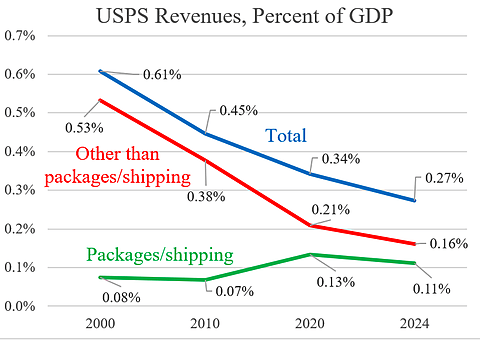President Joe Biden announced this week that the Department of Homeland Security (DHS) will create a new process “by the end of the summer” for certain immigrant spouses of US citizens who entered the country illegally at least ten years ago to become legal permanent residents or green card holders. This plan is legally sound and good policy in theory but faces serious procedural challenges to implementation. To allow for an effective implementation that does not harm immigrants applying for other processes, the DHS must streamline its procedures.
Good Policy But…
This executive action is a good idea. Americans should have the right to marry and live with whomever they want, regardless of where they were born. Violating a bureaucratic regulation is not a sufficient reason to eliminate those rights. Breaking up these families would have massive costs for American citizen spouses and children, not to mention US taxpayers. Supposing that we never deport them, continuing to bar their right to work legally would still punish these families, US employers, and US consumers.
The policy arbitrarily requires immigrants to have arrived by June 17, 2014, and have been married by June 17, 2024. This means only spouses of US citizens who have been in the United States for ten years as of this week will benefit. If an immigrant reached ten years of residence a few weeks from now or is only engaged, not married, they would miss out on this opportunity, which makes no sense. There is no reason to restrict the policy in this manner.
Law enforcement resources should not focus on long‐time residents of the United States and certainly not on immediate relatives of US citizens who would otherwise be eligible for green cards. It is also extremely unfair to exclude people who did leave the country and are waiting for the opportunity to apply abroad.
Regardless, the extensive backlogs in immigration processing make it unlikely that the new policy will help many applicants in the short term. Moreover, since President Biden did not do anything to help anyone in those backlogs or streamline processing alongside this new program, the policy will disadvantage these backlogged immigrants by pulling resources toward this population and away from addressing their cases. Immigration processing should not be zero‐sum. DHS can cut red tape in ways that would free up resources for this executive action while benefiting existing applicants.
Legal Framework for Biden’s Action
Spouses of US citizens are entitled to green cards or legal permanent residence. However, under section 245(a) of the Immigration and Nationality Act (INA), immigrants may not adjust their status to legal permanent residence unless they were “inspected and admitted or paroled” (8 U.S.C. 1225(a)). This means that immigrants who enter with a visa can adjust their status and receive a green card, even if they overstayed their period of admission. But immigrants who crossed the border illegally are generally ineligible to adjust their status.
This creates a strange loophole where some immigrant spouses—even some illegal immigrant spouses—of US citizens can adjust their status, while others cannot. When an immigrant cannot adjust their status, the alternative is to leave the country to apply for an immigrant visa at a US consulate abroad. But under INA section 212(a), immigrants who have spent at least one year in the United States illegally, as is the case here, cannot receive a visa for ten years unless their exclusion would cause their US spouses or children to face “extreme hardship.” This is a very difficult bar to overcome.
One exception to the bar on adjustment is called “cancellation of removal” for spouses of US citizens who have been in the country for ten years and whose families would face “exceptional and extremely unusual hardship.” This burden is extraordinarily high, and there’s no way to apply for it directly. Immigrants can only request it if the government tries to remove them.
Fortunately, Congress created another exception to the bar on adjusting in the United States for immigrants who are “paroled,” which is the authority the Biden administration is using to implement this new policy. INA section 212(d)(5)(A) authorizes the DHS secretary to grant parole at his discretion for “urgent humanitarian reasons or significant public benefit.” This provision is on its face very broad, though it has been over‐regulated and underutilized—especially prior to the Biden administration—but the statute authorizes only the DHS secretary to decide the meaning of these terms.
Parole is a temporary status that can be revoked at any time. But the point of parole in this case is primarily to open a way for these immigrants to apply for legal permanent residence. Paroling them effectively wipes the slate clean and allows the spouses to apply for permanent status for them.
Despite this straightforward legal logic, the action will likely provoke legal challenges. Beyond the plain language in the statute, the administration can credibly state that it is not creating a new policy: it is merely expanding the same parole policy for spouses of US citizens who are US veterans or members of the military, which it had used since at least 2007. In the 2019 National Defense Authorization Act, which President Trump signed, Congress stated that “the importance of the parole in place authority of the Secretary of Homeland Security is reaffirmed.”
This legal background should make the Biden policy legally unassailable. Even anti‐immigrant organizations expressed at the time that Congress had opened the doors to a future expansion. Of course, there is always a risk that courts will say, “This far, but not further” on the use of congressional grants of executive authority. So until the Supreme Court weighs in, there will always be a risk that the program will fall.
The one legal issue that could certainly delay or even doom the proposal is if it is implemented without notice and public comment rulemaking as required under the Administrative Procedures Act. The DHS has implied that it may only provide “notice” of the new rule without taking comments.
Historically, parole policies have never gone through notice and public comment rulemaking because they were seen as internal guidance for the agency, not “rules” for the public, but some courts have recently taken a stricter view. The Obama‐era Deferred Action for Parents of Americans policy, which dealt with internal guidance on processing deferred action applications, was held up in part on these grounds.
Implementation Issues
While the new policy is legally sound as stated, it faces serious legal obstacles to implementing it before the end of the president’s first term. First, the median wait time for a normal green card application for a spouse of a US citizen is 10 months—many applications take 15–18 months or longer—so it is impossible that many immigrants applying under this policy will receive green cards before the end of Biden’s first term. There is already a backlog of about 350,000 spouses of US citizens.
Second, the wait time for the “extreme hardship” process (called a 601A waiver) is a nearly unimaginable 42 months (Figure 1). This process allows spouses (as well as children and parents) of US citizens to receive a determination of whether their family would face “extreme hardship” if they were excluded. If they would, the spouse can go to a US consulate to receive an immigrant visa to come back without waiting outside the United States for ten years.
Under President Biden, the wait time for these 601A waivers has increased from eleven months in 2020 to nearly forty‐two months. In other words, Biden is only just now approving applicants who applied in December 2020—before he was elected. Biden’s DHS has done almost nothing to help the most pressing group of immigrants affected by his latest order under the existing procedures, and there is now a backlog of 130,000 601A waiver cases. Lawsuits are pending over the Biden administration’s failure to process these cases (Figure 2).
The DHS estimates that this policy will benefit 500,000 spouses of US citizens and 50,000 stepchildren of US citizens. The DHS approved fewer than 330,000 family‐sponsored green cards in all of 2023. There were fewer than 600,000 green cards approved in the entire year. The only way that DHS will be able to process these cases before January 2025 will be to prioritize them ahead of nearly every other pending applicant for a green card. That would be unfair and unjustifiable.
Although this policy improves immigration policy, it is reprehensible that Biden has waited until a few months before the presidential election to move forward with it or address the longstanding backlogs for spouses of US citizens. Notice that this proposal is not even supposed to be open for applications until the end of the summer. With the processing delays and likely litigation, we can expect that few beneficiaries will receive green cards before next year, which makes it possible that a new president could end the process completely.
But there is no reason to end it. Immigration is not a zero‐sum game. Policies that benefit one group of immigrants do not need to harm another group. As it did with the parole policy for spouses of veterans and military personnel, Congress should ratify this new policy, protecting the rights of Americans from an overly restrictive immigration system.




